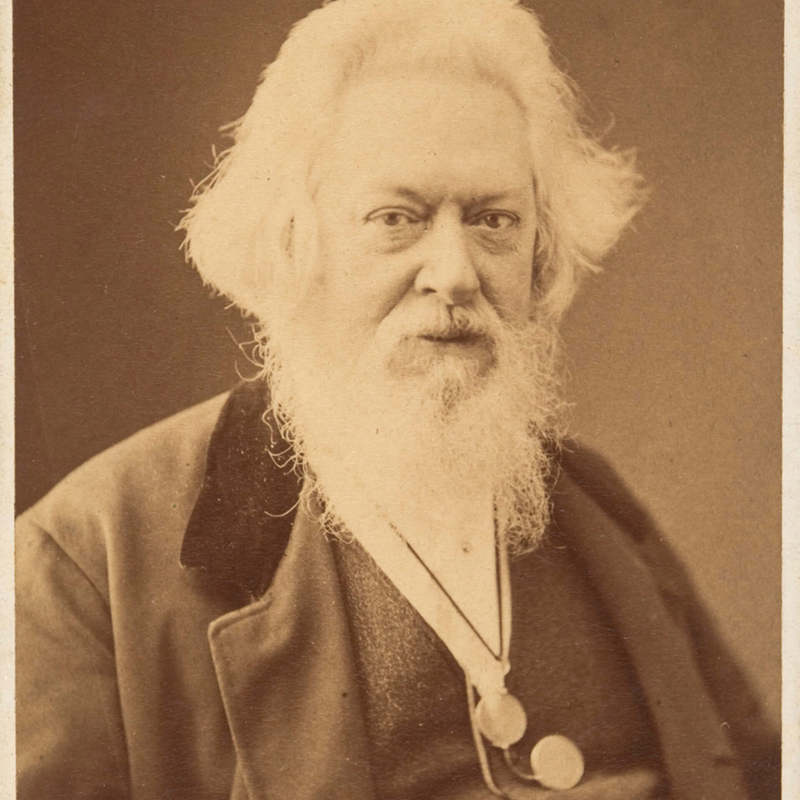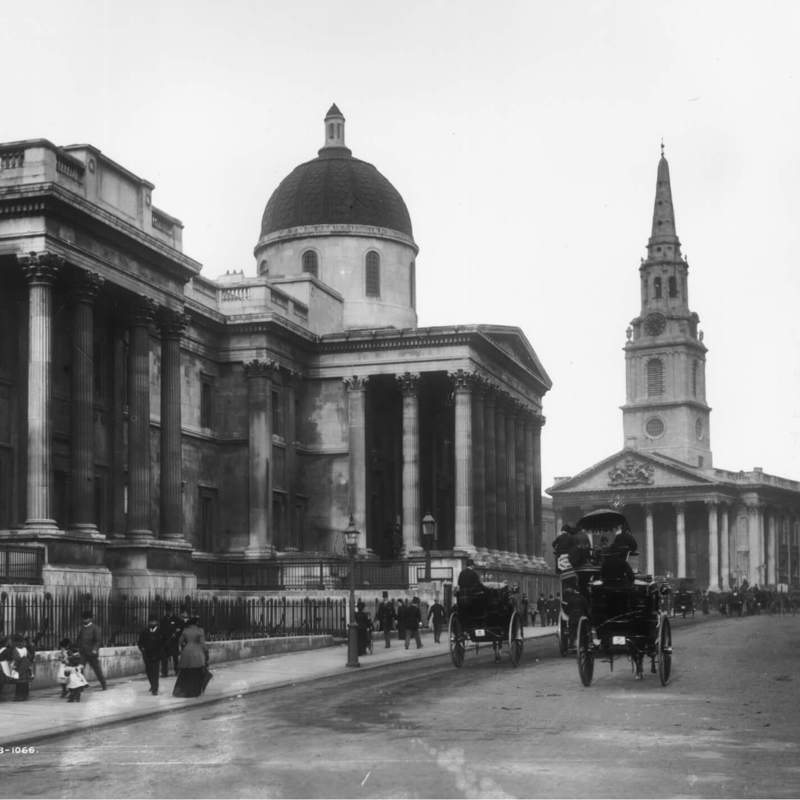Architectural competition
Who designed the Barry Rooms at the National Gallery?
The Barry Rooms are some of the grandest spaces at the National Gallery. With marble pillars and majestic domed ceilings, these rooms have held many events, dinners and concerts over the years. But they haven't always been there and the story behind architect Edward Middleton Barry's designs is far from straightforward.
New designs
The National Gallery moved to Trafalgar Square in 1838, with a new building designed by architect William Wilkins. After only 28 years, the government decided to hold a competition to redesign the Gallery.
In 1866, architects were asked to submit two ideas. The first was a design to remodel the existing building and the second was a design for a completely new building. However, there were some complications in choosing an architect. Barry was a joint winner of another competition to design the New Law Courts in London that was running at the same time. However, he was unable to work with the other winner, architect George Edmund Street, so he was given the National Gallery job instead.
The Barry behind the rooms
At the time, Barry was working for his father, the established architect Sir Charles Barry, having trained at King's College London and the Royal Academy Schools. Barry's proposal for the National Gallery included a grand new building, topped with domes.
However, critics claimed it was ‘a strong plagiarism on St Paul's Cathedral’. Instead, Barry was asked to extend the original designs created by Wilkins. By 1876, eight new gallery spaces were opened. They were named the Barry Rooms, after the architect.
Gold leaf and winged lions
The interiors of the Barry rooms were designed by the Crace brothers. Each room was decorated with glistening gold leaf and was colourfully painted. Up close, they even integrated famous artists' names, dolphins and winged lions in the designs.
Room 32 is the largest of the Barry Rooms and is now called the Julia and Hans Rausing Room, after the benefactors who funded its extensive restoration in 2019. When it reopened to visitors, the Julia and Hans Rausing Room redisplayed the collection of 17th-century Italian pictures.









